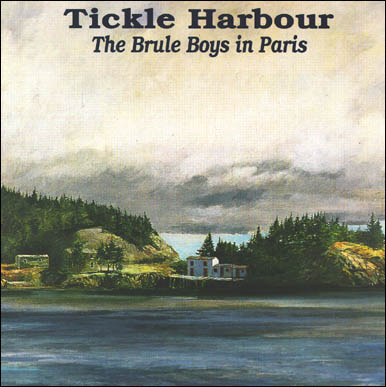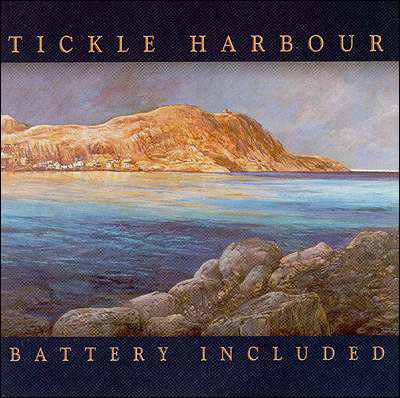Tickle Harbour
A Musical Journey Through Newfoundland's Heritage
A contemporary band with deep roots in Newfoundland's cultural heritage, Tickle Harbour is representative of the folk music revival in Newfoundland and Labrador. Indeed, like Figgy Duff before them, Tickle Harbour's songs resonate with the musical heritage of the first European settlers from Ireland and England. In existence since 1980, Tickle Harbour has released three albums, The Hare's Ears, Brule Boys In Paris and Battery Included. Recordings of their last two albums and selected liner notes have been digitized and presented here with permission of the group. Please note that the digitized Internet versions are lower quality representations of the actual music. Both albums are still available on compact disc and tape formats.

The Brule Boys in Paris
(From the liner-notes of the album The Brule Boys in Paris, 1991)
The Brule Boys in Paris (pronounced Brú-lee) is the work of a reincarnated metamorphosed Tickle Harbour. The current group - three Newfoundlanders, three Irishmen and an American - offers a blend of music through which one can discern the strains of ancient Irish melodies and hints of the sounds of the Newfoundland kitchen time. Influenced by both tradition, it is slavishly imitative of neither; it is Newfoundland / Irish music, with the distinct flavour of the folk music revival about it.
In the Newfoundland context, such music is the inevitable result of the resettlement process - a government initiated scheme of the '50s and '60s which, in the name of progress, and labouring under a benighted vision of the future, disappeared many of the smaller fishing communities (Brule is a deserted fishing community in Placentia Bay) and struck a mortal blow at the traditional Newfoundland way of life. The traditional music, without the usual communal supports and supplanted by mainstream North American popular culture, survived in the memory only. In time, many Newfoundlanders - those with a musical bent, a sense of the past, and a firm grasp on the present - were inspired to fire that memory back to life. The Brule Boys in Paris is one result, and it rings with the same spirit that took not only the boys from Brule "to St. Peter's in the springtime of the year," but many a boy from many a Newfoundland outport to the West Indies, La Havre, St. Malo, and Oporto - "some pleasures for to find."
Pat Byrne, 1991

The Battery Included
(From the liner-notes of the album Battery Included, 1998)
Today The Battery refers to the community at the extreme eastern end of St. John;s harbour. It includes the dock, fishing stages, and closely compacted houses leaning against the steep hillside and cliffs from the foot of Signal Hill Rd. out to Chain Rock, and north to Deadman's Pond. It gets its name from a number of gun emplacements erected in the area after the French invasion and capture of St. John's in 1762.
When the British retook the town the following year they strengthened its defences. Chain Rock Battery was completed in 1769. After the Napoleonic Wars new batteries were constructed and stockaded. Waldegrave Battery was built in the mouth of the narrows. Wallace's Battery was raised atop Gibbet Hill, and 350 ft. directly above Chain Rock, Queen's Battery was erected to face out to sea. The area became known as The Battery. When these defences fell into disuse in the early 19th century, local fishermen built stages and flakes along the waterfront and dwellings on the steep hillside.
With the coming of the railway in 1881, a shunting yard for trains operating from the station in nearby Fort William occupied all of what is now the dock area. When a new railway station opened at the western end of the harbour in 1903, The Battery reverted to a fishing village. In World Wars I and II, parts of it were again fortified. The concrete remains of a Second World War gun emplacement may still be see there.




